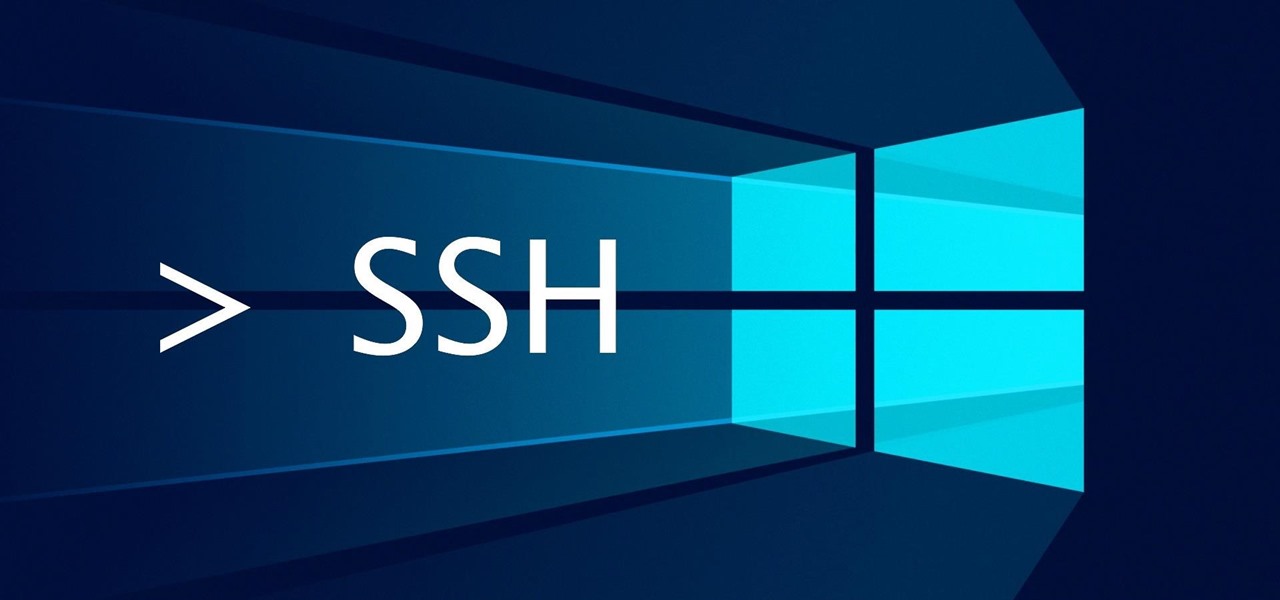The most depressing thing for me is to connect to Windows hosts. I'm not an opponent or a fan of Microsoft and their's products. Every product has its own purpose. But it is really painful for me to connect to Windows servers, because of 2 points: it is hard to configure (Hi WinRM with HTTPS), and it is really unstable (Hello RDP to VMs across the ocean).
Fortunately, I found the project Win32-OpenSSH. I realized that I want to share my experience with it. I believe it will help somebody and save a lot of nerves.

Installation ways:
I will explain the manual way because other ones are obvious.
I must note, this project is on beta stage and it isn't recommended to use it in production.
Well, let's download latest release. Currently it is 7.9.0.0p1-beta. It also has 32 and 64 bit versions.
Then unpack it to C:\Program Files\OpenSSH.
Important: It is necessary to grant write access to SYSTEM and Administers group only.
Futher, install services via shell script install-sshd.ps1 which is located in the OpenSSH directory
Let's allow incoming connections on 22 port:
Note: applet New-NetFirewallRule is for Windows Server 2012 and above only. For older or desktop OS, you can use the following command:
Start the service:
This will automatically generate host keys under %programdata%\ssh if they don't already exist.
You can set up the service auto-start by command:
Also, you can change default shell (it is cmd by default after install):
Note: you must define absolut path.
What's next?
We can configure sshd_config, which is located in C:\ProgramData\ssh.
E.g.:
Then we create .ssh directory inside the user directory (C:\Users\<user_directory>) and authorized_keys file inside it. We can paste public keys into this file.
Important: the only user in which directory it is, must have write permissions for this file.
By the way, if you can't fix it, you can disable permissions check via config:
Also, directory C:\Program Files\OpenSSH contains 2 scripts (FixHostFilePermissions.ps1, FixUserFilePermissions.ps1), which shouldbut not obliged fix permissions, including authorized_keys permissions, but they don't.
Don't forget to restart sshd service to apply changes.
Personal pros/cons.
Pros:
Cons:
Links:
Project on Github
Ansible docs
Fortunately, I found the project Win32-OpenSSH. I realized that I want to share my experience with it. I believe it will help somebody and save a lot of nerves.

Installation ways:
- Manually
- Via Chocolatey package
- Via Ansible, let us say the role jborean93.win_openssh
I will explain the manual way because other ones are obvious.
I must note, this project is on beta stage and it isn't recommended to use it in production.
Well, let's download latest release. Currently it is 7.9.0.0p1-beta. It also has 32 and 64 bit versions.
Then unpack it to C:\Program Files\OpenSSH.
Important: It is necessary to grant write access to SYSTEM and Administers group only.
Futher, install services via shell script install-sshd.ps1 which is located in the OpenSSH directory
powershell.exe -ExecutionPolicy Bypass -File install-sshd.ps1Let's allow incoming connections on 22 port:
New-NetFirewallRule -Name sshd -DisplayName 'OpenSSH Server (sshd)' -Enabled True -Direction Inbound -Protocol TCP -Action Allow -LocalPort 22Note: applet New-NetFirewallRule is for Windows Server 2012 and above only. For older or desktop OS, you can use the following command:
netsh advfirewall firewall add rule name=sshd dir=in action=allow protocol=TCP localport=22
Start the service:
net start sshdThis will automatically generate host keys under %programdata%\ssh if they don't already exist.
You can set up the service auto-start by command:
Set-Service sshd -StartupType AutomaticAlso, you can change default shell (it is cmd by default after install):
New-ItemProperty -Path "HKLM:\SOFTWARE\OpenSSH" -Name DefaultShell -Value "C:\Windows\System32\WindowsPowerShell\v1.0\powershell.exe" -PropertyType String -ForceNote: you must define absolut path.
What's next?
We can configure sshd_config, which is located in C:\ProgramData\ssh.
E.g.:
PasswordAuthentication no
PubkeyAuthentication yesThen we create .ssh directory inside the user directory (C:\Users\<user_directory>) and authorized_keys file inside it. We can paste public keys into this file.
Important: the only user in which directory it is, must have write permissions for this file.
By the way, if you can't fix it, you can disable permissions check via config:
StrictModes noAlso, directory C:\Program Files\OpenSSH contains 2 scripts (FixHostFilePermissions.ps1, FixUserFilePermissions.ps1), which should
Don't forget to restart sshd service to apply changes.
ru-mbp-666:infrastructure$ ssh Administrator@192.168.1.10 -i ~/.ssh/id_rsa
Windows PowerShell
Copyright (C) 2016 Microsoft Corporation. All rights reserved.
PS C:\Users\Administrator> Get-Host
Name : ConsoleHost
Version : 5.1.14393.2791
InstanceId : 653210bd-6f58-445e-80a0-66f66666f6f6
UI : System.Management.Automation.Internal.Host.InternalHostUserInterface
CurrentCulture : en-US
CurrentUICulture : en-US
PrivateData : Microsoft.PowerShell.ConsoleHost+ConsoleColorProxy
DebuggerEnabled : True
IsRunspacePushed : False
Runspace : System.Management.Automation.Runspaces.LocalRunspace
PS C:\Users\Administrator>Personal pros/cons.
Pros:
- Standart way to connect to any server (Windows/Linux)
When you have a few Windows host, it's inconvenient:
So, here we go via ssh, but here via RDP,
and generally speaking, it is the best-practice with bastions, firstly ssh-tunnel, then RDP via the tunnel. Oh kill me baby one more time. - Easy to configure
I think it is obvious. - Connection speed to remote host
Without GUI we save up host resources, and size of transmitted data
Cons:
- It can't replace RDP in some cases.
Not the all things you can do via PowerShell. I mean the cases when GUI is required.
Links:
Project on Github
Ansible docs